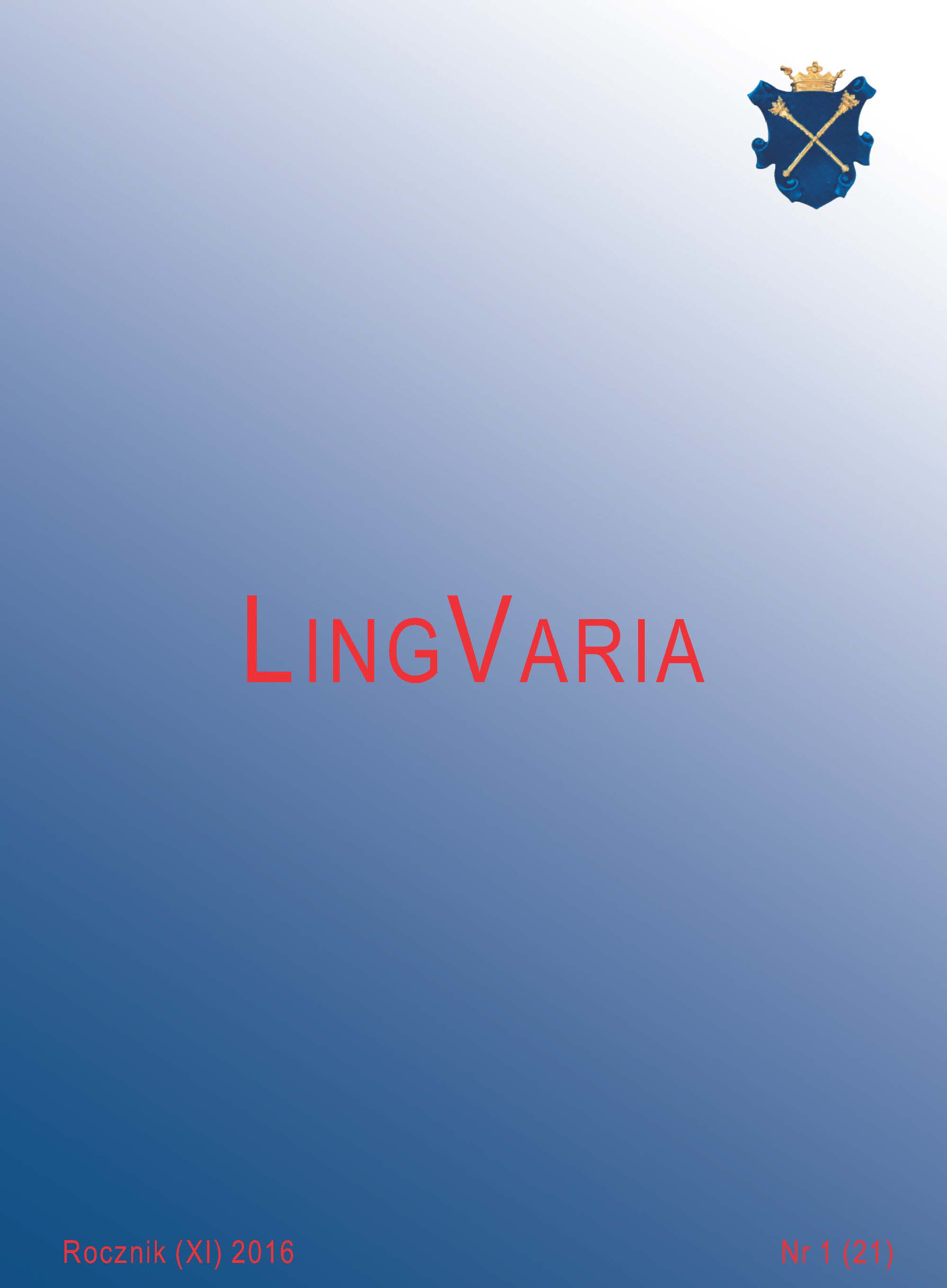Inskrypcja na grocie rozwadowskiej włóczni (KJ35): ik eruls czy ik erlas?
DOI:
https://doi.org/10.12797/LV.11.2016.21.02Słowa kluczowe:
gocki, inskrypcje w starszym futharku, języki wschodniogermańskie, erilar, jarl, KJ35, język wandalskiAbstrakt
The Rozwadów spearhead inscription (KJ 35): ik eruls or ik erlas?
The paper discusses two possible interpretations of the (East Germanic?) runic inscription found in Rozwadów, Poland (KJ35), which reads ]krlus. Two alternatives are proposed: (1) [i]k (e)r(u)ls, and (2) [i]k (e)rlas, both with the meaning ‘I belong to the Heruli’. The first alternative assumes that the rune kaunan is a remainder of the first person personal pronoun ik ‘I’ known from Gothic, whereas the preceding rune isaz has been destroyed as the spearhead is broken just before kaunan. Then, the expected rune ehwaz is absent; we can either guess it was destroyed, or never written at all. The last assumption here is a metathesis of uruz and laguz from the intended *eruls to the attested (e)rlus, and the syncope in a-stems. The second alternative is similar but it argues that the last but one rune should be read ansuz, not uruz, and moreover, it assumes neither the metathesis of uruz and laguz, nor the syncope in a-stems. If the inscription ]krlus is to be read [i]k (e)r(u)ls, it would contain the only known Germanic attestation of a continuant of the Proto-Germanic *erulaz, later to yield the Old Norse form *jǫrull. If, on the other hand, it is to be interpreted as [i]k (e)rlas, it would be the only attestation of a continuant of the Proto-Germanic form *erlaz predating Old Norse jarl. Both hypotheses show that the inscription is of great importance for the studies on the (phonetic) development of the word known from Proto-Nordic as erilar.
Pobrania
Bibliografia
Ebel E., 1963, Die Terminologie der Runentechnik, Göttingen.
Elliott R., Warren R.V.E., 1980, Runes: An Introduction, Manchester.
Forthson B.W. IV, 22010, Indo-European Language and Culture. An Introduction, Oxford.
Garbacz, P., 2015, ]krlus. Jak rozumieć napis na grocie rozwadowskiej włóczni, [w:] A. Garbacz (red.), Z przeszłości miasta Rozwadowa i okolic, Stalowa Wola, s. 73–79.
Hoffner H.A. Jr., Melchert H.C., 2008, A Grammar of the Hittite Language, cz. 1: Reference Grammar, Winona Lake, Indiana.
Horbowicz P. et al., 2011, Runy, W. Maciejewski (red.), „Acta Sueco-Polonica. Monografie” 2, Warszawa.
Jacenko S.A., 2009, [= С.А. Яценко], Znaki sobstvennosti sarmatskogo oblika (gakk/nishan) v selʹskih rajonah Bosporskogo carstva I–III vv. n.è., [w:] A.A. Maslennikov (red.), Drevnosti Bospora, t. 13, Moskva, s. 539–552.
Kaczanowski P., 1988, Chronologia inkrustowanych grotów broni drzewcowej z okresu wpływów rzymskich z obszaru europejskiego Barbaricum, [w:] M. Gedl (red.), Scripta Archæologica, Warszawa – Kraków, s. 51–75.
Krause W., Jankuhn H., 1966, Die Runeninschriften im älteren Futhark, „Abhandlungen der Akademie der Wissenschaften in Göttingen, Philologisch-Historische Klasse 3”, Folge 65, Göttingen.
Looijenga T., 2003, Texts and Contexts of the Oldest Runic Inscriptions, London.
Mees B., 2003, Runic erilaR, „North-Western European Language Evolution” („NOWELE”) 42, s. 41–68.
Noreen A., 1903, Suffixablaut im Altnordischen, „Indogermanische Forschungen” 14, s. 396–402.
Paluch J., 2015, Przyczynek do historii badań archeologicznych w Rozwadowie i okolicach, [w:] A. Garbacz (red.), Z przeszłości miasta Rozwadowa i okolic, Stalowa Wola, s. 35−54.
Snædal M., 2009, The ‘Vandal’ Epigram, [w:] „Filologia Germanica – Germanic Philology” t. 1, Lingua e Cultura del Goti – Language and Culture of the Goths, Mediolan, s. 181–215.
Snædal M., 2011, The Runic Inscriptions from Kovel and Pietroassa, [w:] P. Lendinara, F.D. Raschellà, M. Dallapiazza (red.), Saggi in onore di Piergiuseppe Scardigli, „Jahrbuch für Internationale Germanistik” 105, Bern − Berlin − Bruxelles − Frankfurt am Main − New York − Oxford − Wien, s. 233–243.
Śmiszko M., 1936, Grot dzirytu z runicznym napisem z Rozwadowa nad Sanem,„Wiadomości Archeologiczne” 14, s. 140–146, XIX–XX.
Wiatrowicz M., 2015, Tajemnice rozwadowskiej włóczni, [w:] A. Garbacz (red.), Z przeszłości miasta Rozwadowa i okolic, Stalowa Wola, s. 59–75.
Pobrania
Opublikowane
Numer
Dział
Licencja

Utwór dostępny jest na licencji Creative Commons Uznanie autorstwa – Użycie niekomercyjne – Bez utworów zależnych 4.0 Międzynarodowe.






